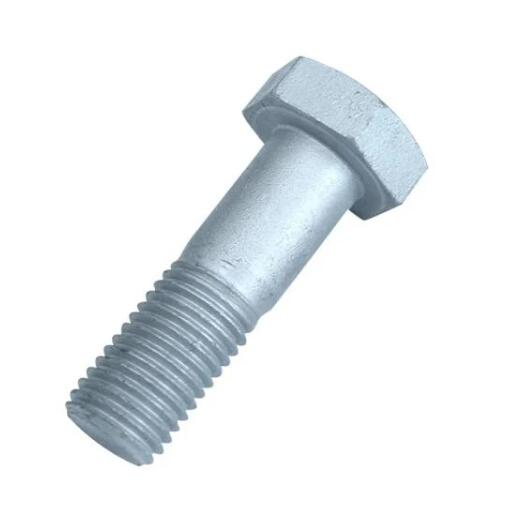The Manufacturing and Material Science Behind Heavy Hex Bolts
2024-08-30
Heavy hex bolts are a staple in construction and industrial applications, valued for their strength and reliability. But what makes these bolts so robust? The answer lies in the manufacturing processes and material science behind their production. In this blog, we'll explore how heavy hex bolts are made, the materials used in their construction, and the standards that ensure their quality.
Manufacturing Process of Heavy Hex Bolts
1. Material Selection: The first step in manufacturing heavy hex bolts is selecting the appropriate material. High-strength steels, such as alloy steel and stainless steel, are commonly used due to their superior tensile strength and durability. The choice of material depends on the application, with considerations such as load-bearing requirements and environmental exposure.
2. Hot and Cold Forging: Heavy hex bolts are typically manufactured using either hot or cold forging processes. In hot forging, the steel is heated to a high temperature and then shaped using a die. This process enhances the material's ductility and toughness. Cold forging, on the other hand, involves shaping the steel at room temperature, resulting in a stronger and more precise product.
3. Thread Rolling: After the bolt is forged, the threading process begins. Thread rolling is the preferred method for creating the threads on heavy hex bolts, as it involves deforming the material rather than cutting it. This process not only creates stronger threads but also improves the bolt's fatigue resistance.
4. Heat Treatment: To further enhance the strength and durability of the bolt, a heat treatment process is applied. This typically involves quenching and tempering, which hardens the material and refines its microstructure. The result is a bolt that can withstand high loads and resist wear and tear.
5. Surface Treatment: Heavy hex bolts are often exposed to harsh environments, so surface treatments are applied to protect them from corrosion. Common treatments include zinc plating, hot-dip galvanizing, and black oxide coating. These treatments not only enhance the bolt's corrosion resistance but also improve its appearance.
6. Quality Control and Testing: To ensure that heavy hex bolts meet industry standards, they undergo rigorous quality control and testing. This includes tensile strength tests, hardness tests, and dimensional inspections. Only bolts that pass these stringent tests are approved for use in critical applications.
Materials Used in Heavy Hex Bolts
1. Carbon Steel: Carbon steel is the most common material used in heavy hex bolts, especially for general-purpose applications. It offers a good balance of strength, toughness, and affordability. However, carbon steel bolts may require surface treatment to improve their corrosion resistance.
2. Alloy Steel: For applications requiring higher strength, alloy steel is often used. Alloy steel contains additional elements such as chromium, molybdenum, and vanadium, which enhance its mechanical properties. Heavy hex bolts made from alloy steel are ideal for high-stress environments, such as in heavy machinery and structural applications.
3. Stainless Steel: Stainless steel is chosen for its excellent corrosion resistance and strength. It is commonly used in environments where exposure to moisture, chemicals, or salt is a concern, such as in marine and chemical processing industries. Stainless steel heavy hex bolts are also preferred in applications where appearance is important, as they maintain a shiny, rust-free surface.
4. Specialty Alloys: In extreme environments, such as those involving high temperatures or corrosive chemicals, specialty alloys like Inconel or Monel may be used. These materials offer exceptional resistance to heat and corrosion, making them suitable for use in power plants, aerospace, and other demanding applications.
Standards and Specifications for Heavy Hex Bolts
Heavy hex bolts must meet specific standards to ensure they are suitable for their intended applications. Some of the key standards include:
1. ASTM Standards: The American Society for Testing and Materials (ASTM) provides specifications for various grades of heavy hex bolts. These standards define the mechanical properties, material composition, and testing requirements for bolts used in construction and industrial applications.
2. SAE Standards: The Society of Automotive Engineers (SAE) also sets standards for heavy hex bolts, particularly for use in automotive and machinery applications. These standards focus on the bolt's dimensions, threading, and material properties.
3. ISO Standards: The International Organization for Standardization (ISO) provides global standards for heavy hex bolts. These standards ensure that bolts produced in different countries are compatible and meet the same quality criteria.
4. DIN Standards: The Deutsches Institut für Normung (DIN) sets standards for heavy hex bolts in Germany and Europe. DIN standards are widely recognized and often used in conjunction with other international standards.
Conclusion
The manufacturing and material science behind heavy hex bolts are key to their performance in demanding applications. From material selection to forging, threading, and heat treatment, each step in the manufacturing process is carefully controlled to produce bolts that meet stringent quality standards. By understanding the processes and materials involved, manufacturers can ensure that heavy hex bolts provide the strength, durability, and reliability needed for critical structures and machinery. As industries continue to evolve, so too will the technologies and standards that govern the production of these essential fasteners.



